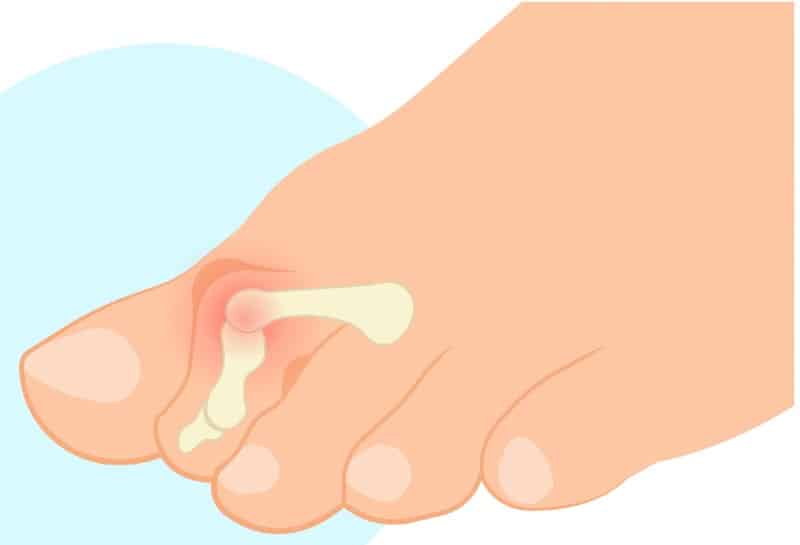Foot Deformities
No two sets of feet are exactly alike. They’re as unique as you are! That said, the unfortunate truth is that they aren’t all equally good at helping you get around without pain.
Perhaps you’ve noticed that your feet or toes seem to be changing shape—toes contracting or drifting out of alignment, bumps forming, arches flattening. And at the same time, you may find that it’s harder to get around, enjoy your activities, or fit into your favorite pair of shoes without pain.
Yes, no two feet are exactly alike. But foot shapes that deviate significantly from what is normal—foot deformities, in other words—may cause you a lot of pain and discomfort if you don’t seek out appropriate treatment.
Common Foot Deformities
Probably the four most common foot deformities we see at our office are:
- Bunions. In this condition, you’ll notice a large bump beginning to form at the base of your big toe, along the inside of the foot. At the same time, the big toe drifts out of place, with the toe pointing toward (or even crossing over) the second toe.
- Hammertoes. These usually occur in the second toe, although other smaller toes can get them. The toe bends down at the second knuckle, resembling a hammer. At first, you can usually still bend the joint back into place with your fingers, but over time it becomes more rigid and arthritic.
- Flat feet. Some people are simply born with flat feet, but some people develop them over time due to wear and tear on the ligaments that support the arch.
- Tailor’s bunion. Essentially this is the same as a regular bunion, except it develops on the pinky toe instead of the big toe.
Why Did This Happen?
Although causes can vary based on the specific condition in question, most deformities are rooted in an underlying problem with either the structure of your feet or the way that you walk.
You may have noticed that deformities such as bunions and hammertoes tend to run in families. This is no mere coincidence. It’s likely that you inherited a foot structure that was more prone than normal to developing a deformity over time.
Those underlying imbalances can then be exacerbated by frequently wearing poorly fitted shoes that do not offer the support or cushioning you need in the proper areas.
In a lot of cases, the muscle pairs responsible for flexing, contracting, and extending a toe or joint becomes imbalanced, pulling the joint out of alignment when “at rest.” Over time, the bones begin to adapt to this new arrangement, triggering the onset of arthritic pain.
What Are The Consequences & Complications?
Unfortunately, most foot deformities tend to worsen over time without proper intervention.
In the earliest stages, there may be no pain at all, and you may feel that you can continue living your life as you wish.
However, as the deformity worsens, you may find it harder and harder to do your favorite activities without pain. Your shoes may no longer fit. Joints become more rigid, inflexible, and arthritic.
If you wait months or even years to deal with a worsening bunion, hammertoe, or other deformity, the unfortunate truth is that it may leave you with surgery as the only available recourse.
How Are Bunions, Hammertoes, & Other Foot Deformities Treated?
Our preference is to help you deal with your deformity pain and return to your normal activities using nonsurgical care whenever possible.
If you seek treatment early enough, simple solutions like wearing roomier and more supportive shoes or getting fitted for custom orthotics may offer substantial relief—along with specific stretching exercises that target the muscles and connective tissues that have weakened or become imbalanced.
One advanced option that may provide even further symptom relief is MLS laser therapy. This system uses twin lasers to greatly ease inflammation, reduce pain, and heal injured soft tissue.
Although treatments such as these won’t make the deformity “go away,” they may take away the pain and slow the rate that it gets worse.
If the deformity is more severe or causing daily pain, however, it is more likely that a surgical reconstruction will be necessary.
Procedures vary based on the type of condition, severity, lifestyle goals, and other factors, but the good news is that most procedures have very high rates of overall success and patient satisfaction. MLS laser can also be incorporated into your plan for surgery to help your surgical site heal faster and reduce post-surgical pain, swelling, and scarring.
We’ll be sure to go over all your options with you carefully, make our recommendations, and give you clear and realistic expectations.
But again, our hope is that you won’t even need surgery in the first place—and the earlier you come to see us about your deformity, the better those chances will be!
To schedule an appointment with one of the physicians at Heartland Foot & Ankle Associates, please call us today at (309) 661-9975, or use the contact form on this page to request one electronically.
Pricing Information
Bunions/Hammertoes/Foot Pain
Initial Visit
- Examination and evaluation by the physician – $246.00
- X-Rays – $322.00
- Ultrasound (as needed of the soft tissues) – $138.00
- Cortisone Injection – $356.00
- Stretching Splint (to help avoid physical therapy!) – $325.00
- Custom Foot orthotics (to keep it from coming back!) – $699.00
- Ultraflex, Powerstep inserts, Theraband Kit – $99.99
Follow-up visits (Most Require 1-3 Visits)
- Examination and evaluation by
physician – $147.00 - Laser Therapy (as needed) – $499.00
- Physical Therapy (as needed) – (sent out of office)
- Surgical consultation/Procedure – (varies depending on procedure)

